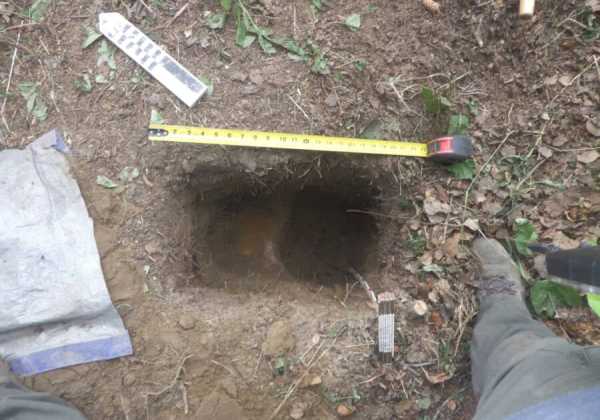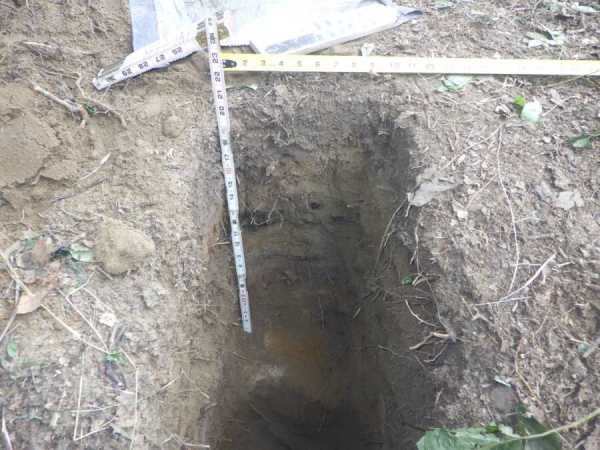Dug 3.5 feet deep and lined with birch bark and grass, this carefully constructed pit would have been ideal for storing meat and fish — and researchers actually found 1,000-year-old traces of caribou and moose still inside.

Joint Base Elmendorf-RichardsonThe food pit is located along an important trail traditionally used by the Indigenous Dene people to travel between Upper Cook Inlet and the Matanuska and Susitna valleys.
In June 2024, archaeologists from the Joint Base Elmendorf-Richardson (JBER) discovered the 1,000-year-old cache near Upper Cook Inlet on a hill of spruce and birch overlooking the Knik Arm, a narrow stretch of the Gulf of Alaska. In a December press release, military officials described the cache as a kind of root cellar, used to store food and preserve it throughout Alaska’s seasonal weather extremes.
“This is the oldest known site on the east side of Upper Cook Inlet, and further substantiates Dena’ina and Ahtna oral traditions that JBER and the surrounding area have been used for a very long time,” said Margan Grover, archaeologist and JBER cultural resource manager.
Similar examples have been found in the past in other Alaskan regions, particularly the Matanuska and Susitna valleys or on the Kenai Peninsula. However, it is far rarer to find Dene cache pits or house sites near Anchorage, largely due to the area’s history of human development and its less stable ground conditions. For such a site to survive for nearly 1,000 years in this region is truly remarkable.

Joint Base Elmendorf-RichardsonInitial radiocarbon dating shows that meat from moose and caribou were stored in the pit.
“I want this to be an opportunity for people to understand who the Dene of Knik Arm are and how their ancestors lived on the land that is now JBER and Anchorage,” said Grover. “The Dene have a sophisticated understanding of their environment that allowed them to thrive for generations… They actively managed the resources in their territory, doing small things to enhance what nature already provides.”
While most of the site was demolished by the military in 1942, the newly found cache miraculously survived, making it one of the few Dene remnants still left undisturbed. The JBER team said they plan to revisit the cache and conduct further analysis in cooperation with members of the Chickaloon Village Traditional Council and Native Village of Eklutna to determine which methods would be most productive at the site.
“There are things that we know inherently from what was passed down about living in a place, but there are other things that these archeological sites tell us about the past… and about hardship,” said Angela Wade, a Chickaloon Village tribal citizen and tribal historic preservation officer.
“I feel like every site that we learn about, every site that we can further investigate, is a piece of our history that was potentially lost. So this is kind of regaining some of the history that we were separated from.”
After learning about the discovery of this 1,000-year-old food cache, learn more about Native American history through our gallery of 44 colorized photos from 100 years ago. Then, read about nine of Native American history’s most powerful warriors.
Sourse: www.allthatsinteresting.com





